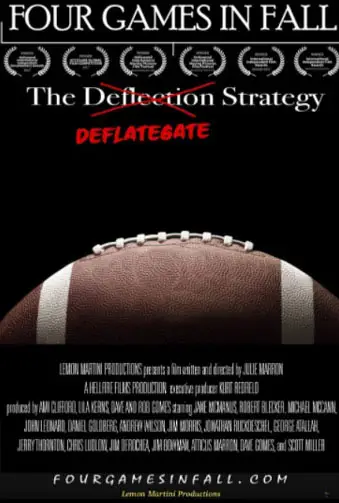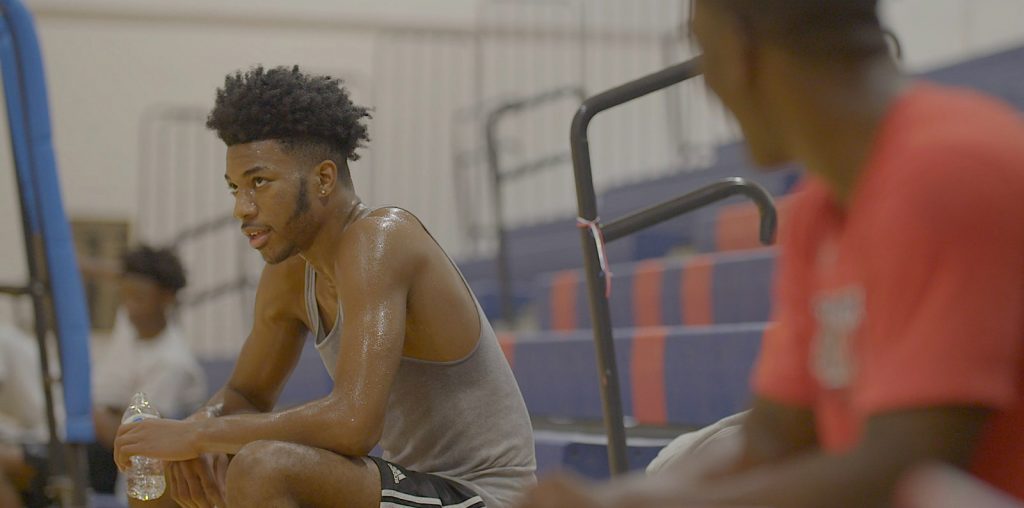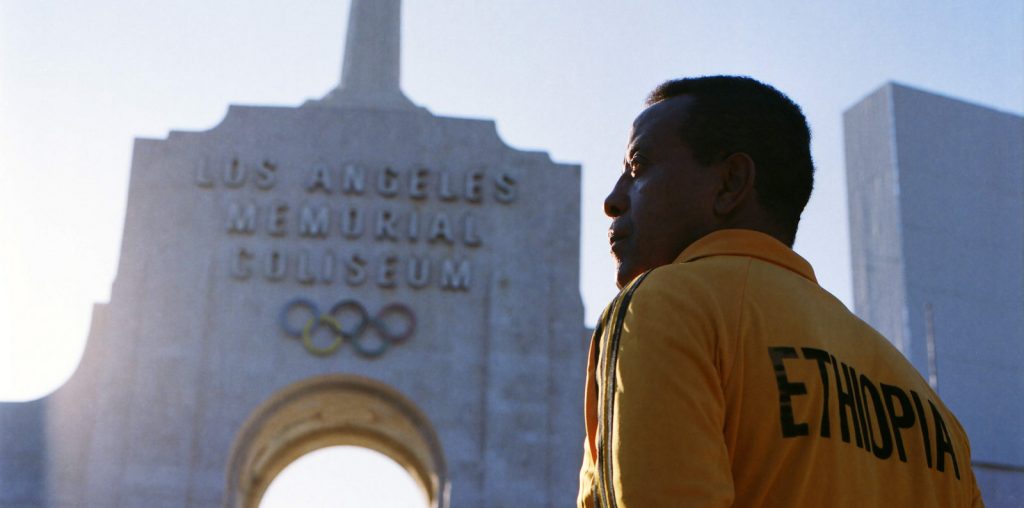
More than half a decade on, the surreal drama of “Deflategate” continues to recede further and further into America’s cultural history. For a certain subset of New England sports fans, however, its memory still carries a sting as bitter as the winters that have steeled their souls.
The documentary Four Games In Fall is a tonic for those very people, who in 2015 saw their beloved, unprecedented NFL dynasty, and the incandescent career of their eternal golden boy quarterback, Tom Brady, shamed and disgraced by accusations of unsportsmanlike behavior and blatant dishonesty. Filmmaker Julie Marron asks the question that still smolders through the consciousness of Patriot Nation: were the multiple Super Bowl-winning team, and especially Brady himself, unfairly targeted by a league that, for its own highly questionable purposes, seemed dead-set on dulling the luster of one of its brightest stars?
According to Four Games In Fall, the answer is yes, and how. But while there’s little question as to Marron’s perspective, the film is no simpleminded pro-Patriots rant a la sports talk radio. Instead, it draws upon the analysis of a number of scientific and legal minds – many of whom freely admit to being longtime haters of the Patriots organization – to make a case against junk science, corporate greed, and media sensationalism that’s as convincing and logical as it is infuriating. Love or hate Brady, the Pats, or the dubious empire that is professional football, it’s tough to come away from the movie feeling as if justice has, in any sense, been served.

“…were the multiple Super Bowl-winning team, and especially Brady himself, unfairly targeted…”
The documentary is an obviously low-budget undertaking, lacking access to a lot of the key personalities and illustrative broadcast material that its narrative centers on. The Patriots are represented mostly by their team lawyer, Daniel Goldberg, and a handful of “homers” like Barstool Sports correspondent Jerry Thornton; Brady and head coach Bill Belichick only hover around the margins in this telling of what is, primarily, their story. That grassroots approach also means that Four Games In Fall lacks the polished, prestige-television feel that characterizes superlative sports docs like ESPN’s 30 For 30 series.
What stands in for big names and burnished cinematography, though, is a compelling and very lucid breakdown of “Deflategate” and the surprisingly large number of investigative and legal inconsistencies that linger just beneath the reported facts in the affair. After briefly celebrating the ideal of fair play in athletic competition, the film provides an efficient recap of the events and the controversy that’s just informative enough to get even non-sports fans up to speed on how it all played out.
In short: following a Brady interception by Indianapolis Colts linebacker D’Qwell Jackson in the 2014 AFC Championship Game, the Super Bowl-bound Patriots were accused of having air pressure bled from their game balls by team employees – potentially making the balls easier to grip and, thus, giving the QB and his receivers an unfair advantage over the opposing team. What followed was a heavily publicized investigation by the NFL that, eventually, ensnared Brady alongside the overall Patriots organization. Much legal wrangling and media back-and-forth ensued, the ultimate result of which was the Patriots incurring a hefty fine and a loss of two 2016 draft picks – as well as Brady being suspended for the first four games of the 2016 regular season; hence the title.

"…just like any good legal drama, a compelling villain soon begins to emerge..."



It’s an important film to watch BUT it needs corrections for anyone seeking to truly understand the scandal: the film’s claim that “the NFL deliberately leaked false information about the data” is untrue, as is the claim that the NFL gave the Patriots erroneous data, the claim that the investigators under-appreciated the natural pressure losses, and the claim that the data was insufficiently complete and precise to settle the matter. The NFL report and the movie omit witness observations of the Colts’ balls having ~11.5 psi, down from 13, and the Patriots balls being under 11 psi at the very start of halftime. Those observations were the basis for the leaks. The NFL’s early and honest mistake was ignorance of the recent rule change that allowed the Patriots to legally set their balls to 12.5 psi to start with vs. the 13 used by the Colts. Once the controversy took hold, and once the NFL figured out their mistake, the NFL did elect to frame the Patriots by not clarifying the leaks, but did not engage in science denial as the movie claims, but rather “witness denial.” The later investigators hid and overruled massive amounts of witness testimony; all the lab tests were run in ways counter to multiple witness accounts about multiple things. The data was neither unreliable nor incomplete, which is fortunate because studying the NFL materials much deeper than the movie did produces an air-tight proof of innocence that renders moot all the circumstantial evidence against the Patriots that many reporters reasonably see as a making a strong case for cheating. Because the NFL made so much data public, including accidentally revealing crucial information during the appeal hearing, the data that was omitted can be calculated or deduced from the data that was disclosed. Watch the movie to appreciate the general dishonesty of the NFL and the science-for-hire industry, but to truly know what really happened and the full depth of the trickery and dishonesty, generally perpetrated without outright lies, read the book “Catching the Accusers,” which remains the only comprehensive analysis of Deflategate.